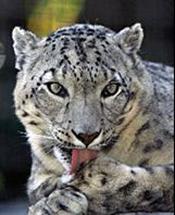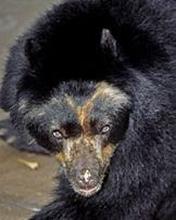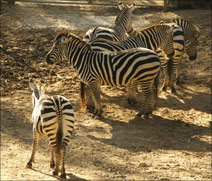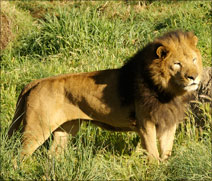
| Zoos: Animals in Captivity - No Freedom, No Choice |  |
Wild animals in zoos are held in artificial environments with little stimulation, enrichment and opportunity to hide from the public gaze. Often, they develop unnatural behavioral patterns as a way of trying to ‘cope’ with their enforced ‘lack of purpose’. Even in the so-called better zoos, abnormal behavior can be widespread, and may include repeated pacing, rocking, vomiting, constant swaying, bobbing, weaving or pacing up and down, and even self-mutilation. These obsessive, repetitive behaviors can be caused by: removal from natural habitat; inability to adequately perform natural behaviors; enforced idleness, boredom and frustration; direct control by humans, loss of personal control; loss of life in normal social group or solitary status; drugs and medical fertility control; caging in a totally alien environment; artificial infrastructure, lighting, predictable diet, unusual noises and colors and unnatural proximity of other animals and human visitors. In September 2002, Oxford scientists claimed hat they had managed to establish a link between stereotypic behavior and stresses incurred by an animal. In a study using captive bank voles, the scientists discovered that the confines of captivity induced changes in a region of the brain (basal ganglia) known to be responsible for organizing and sequencing behavior (Mason et all, 2002) and, consequently, may have profound effects on how the brain functions. Relative to the space afforded to these animals in the wild, zoo environments are pitiful. For example, a tiger’s range in the wild is anywhere from 8—400 square miles, depending on the plentitude of food. At the San Diego Zoo, 4000 animals share 0.156 square miles—including the tigers! In addition to their small living space, zoo animals are on nearly constant public display, and their schedules are completely controlled by humans. They are essentially prisoners with well decorated cells.
|

 |
Calling it ‘Education’ or even ‘Conservation’ will not save life on Earth! Conservation as well as education and being “ambassadors” are used to justify confinement and exploitation of wild animals, while dismissing the resulting physical suffering and psychological problems. Most of these animals cold never be released into the wild. Can the reintroduction into the wild of a handful of captive-bred species justify the lifelong incarceration of millions of wild animals in thousands of zoos? The concept of zoos has reached an evolutionary dead-end: millions of captive animals in inadequate, unnatural conditions, many suiffering or displaying abnormal behaviors, few endangered species and even fewer released to the wild. Life in the wild is complex, unpredictable and frequently dangerous, but it is there that the wild animals have evolved to meet the challenges of survival. That is where they belong. Artificial environments are no substitute. Instead, a greater effort on the preservation of ecosystems is needed- wild animals must be protected in their natural habitats. The survival of all species requires us to change our behavior to minimize our impact on the environment and species survival. Taking an animal away from the wild to the ‘safety’ of a zoo is not the answer. Inspirational conservation and education can be achieved without the confinement and exploitation of animals. |

 |
|